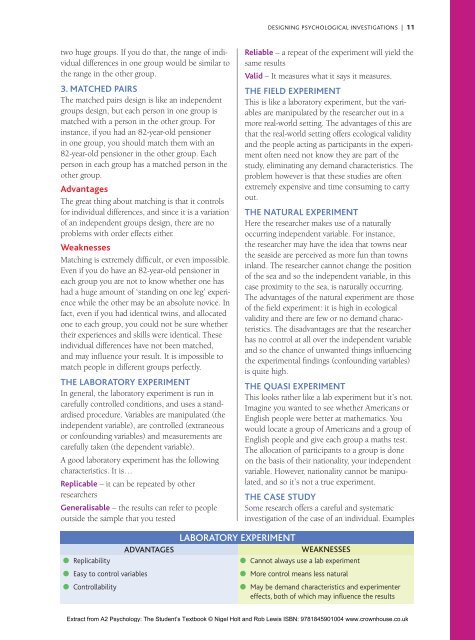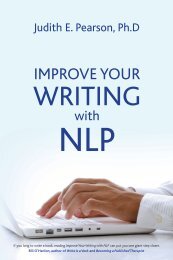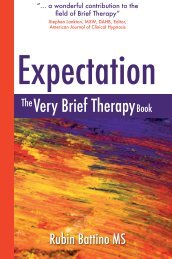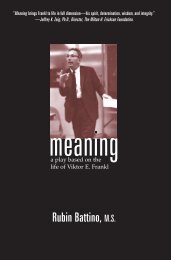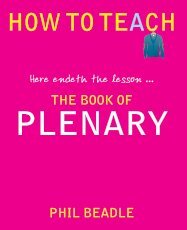Nigel Holt and Rob Lewis - Crown House Publishing.
Nigel Holt and Rob Lewis - Crown House Publishing.
Nigel Holt and Rob Lewis - Crown House Publishing.
You also want an ePaper? Increase the reach of your titles
YUMPU automatically turns print PDFs into web optimized ePapers that Google loves.
DESIGNING PSYCHOLOGICAL INVESTIGATIONS | 11two huge groups. If you do that, the range of individualdifferences in one group would be similar tothe range in the other group.3. Matched pairsThe matched pairs design is like an independentgroups design, but each person in one group ismatched with a person in the other group. Forinstance, if you had an 82-year-old pensionerin one group, you should match them with an82-year-old pensioner in the other group. Eachperson in each group has a matched person in theother group.AdvantagesThe great thing about matching is that it controlsfor individual differences, <strong>and</strong> since it is a variationof an independent groups design, there are noproblems with order effects either.WeaknessesMatching is extremely difficult, or even impossible.Even if you do have an 82-year-old pensioner ineach group you are not to know whether one hashad a huge amount of ‘st<strong>and</strong>ing on one leg’ experiencewhile the other may be an absolute novice. Infact, even if you had identical twins, <strong>and</strong> allocatedone to each group, you could not be sure whethertheir experiences <strong>and</strong> skills were identical. Theseindividual differences have not been matched,<strong>and</strong> may influence your result. It is impossible tomatch people in different groups perfectly.The laboratory experimentIn general, the laboratory experiment is run incarefully controlled conditions, <strong>and</strong> uses a st<strong>and</strong>ardisedprocedure. Variables are manipulated (theindependent variable), are controlled (extraneousor confounding variables) <strong>and</strong> measurements arecarefully taken (the dependent variable).A good laboratory experiment has the followingcharacteristics. It is…Replicable – it can be repeated by otherresearchersGeneralisable – the results can refer to peopleoutside the sample that you testedReliable – a repeat of the experiment will yield thesame resultsValid – It measures what it says it measures.The field experimentThis is like a laboratory experiment, but the variablesare manipulated by the researcher out in amore real-world setting. The advantages of this arethat the real-world setting offers ecological validity<strong>and</strong> the people acting as participants in the experimentoften need not know they are part of thestudy, eliminating any dem<strong>and</strong> characteristics. Theproblem however is that these studies are oftenextremely expensive <strong>and</strong> time consuming to carryout.The natural experimentHere the researcher makes use of a naturallyoccurring independent variable. For instance,the researcher may have the idea that towns nearthe seaside are perceived as more fun than townsinl<strong>and</strong>. The researcher cannot change the positionof the sea <strong>and</strong> so the independent variable, in thiscase proximity to the sea, is naturally occurring.The advantages of the natural experiment are thoseof the field experiment: it is high in ecologicalvalidity <strong>and</strong> there are few or no dem<strong>and</strong> characteristics.The disadvantages are that the researcherhas no control at all over the independent variable<strong>and</strong> so the chance of unwanted things influencingthe experimental findings (confounding variables)is quite high.The quasi experimentThis looks rather like a lab experiment but it’s not.Imagine you wanted to see whether Americans orEnglish people were better at mathematics. Youwould locate a group of Americans <strong>and</strong> a group ofEnglish people <strong>and</strong> give each group a maths test.The allocation of participants to a group is doneon the basis of their nationality, your independentvariable. However, nationality cannot be manipulated,<strong>and</strong> so it’s not a true experiment.The case studySome research offers a careful <strong>and</strong> systematicinvestigation of the case of an individual. Examples●●ReplicabilityAdvantagesLABORATORY EXPERIMENTWeaknesses●●Cannot always use a lab experiment●●Easy to control variables●●Controllability●●More control means less natural●●May be dem<strong>and</strong> characteristics <strong>and</strong> experimentereffects, both of which may influence the resultsExtract from A2 Psychology: The Student’s Textbook © <strong>Nigel</strong> <strong>Holt</strong> <strong>and</strong> <strong>Rob</strong> <strong>Lewis</strong> ISBN: 9781845901004 www.crownhouse.co.uk


